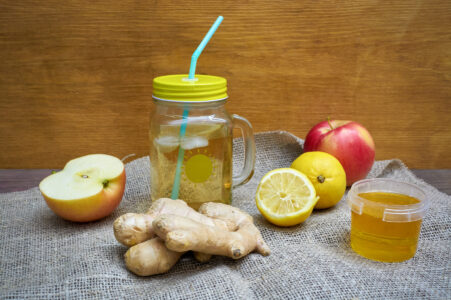Wondering how to dehydrate fruits and vegetables? Learn about some of the best vegetables to dehydrate to keep your pantry well-stocked with a variety of dried produce.
Whether you nurture a suburban backyard garden, two potted tomato plants, or acres of produce, this year you may depend on your harvest not only for fresh vegetables, but also for variety. The COVID-19 pandemic has affected our food supply, from processing plant closures to distribution interruptions.
Luckily, those of us who grow and preserve our own fruits and vegetables are prepared. We turn berries and peaches into jars of jam, and freeze peas and corn for future use. We turn tomatoes into sauce, and fill the root cellar with carrots and squash. And let’s not forget turning piles of cucumbers, zucchini, and asparagus into tangy pickles. But we tend to practice dehydration — one of the oldest methods of food preservation — the least. Which is a shame, because dehydrating fruits and vegetables is easy.
All produce can be safely dehydrated, but some fruits and vegetables are better suited to the process than others. For example, dehydrating water-rich cucumbers or watermelon is a lesson in frustration; the process is long, and the result isn’t very useful. Dehydrating corn, onions, and berries, though, provides a burst of concentrated flavor.
The easiest way to dehydrate fruits and vegetables is in the sun. We still use this age-old method occasionally, but the produce often comes out pale and insipid. Plus, if you live in a humid climate, fruit may spoil before it completely dries out.
Produce can also be dried in an oven, if the oven can be reduced to 140 degrees Fahrenheit. Unfortunately, 170 degrees is the lowest most ovens will go. Foods dried at 170 degrees don’t retain much flavor.
So, the best way to dehydrate fruits and vegetables is with a simple food dehydrator that has a dial thermometer. This type of dehydrator has a fan that keeps air moving, which quickly dries the food and helps it retain flavor. Food dehydrators can be affordable, and they come in a wide variety of sizes.
Dehydrating Vegetables
The best vegetables to dehydrate include carrots, corn, mushrooms, okra, onions, peppers, and tomatoes. Beets, potatoes, meaty zucchini cultivars (such as ‘Tromboncino’), cherry tomatoes, celery, leeks, green peas, cabbage, and turnips also dehydrate well. You can even dehydrate frozen or canned vegetables, including canned beans. Many experts advise against dehydrating greens and celery, but I’ve always had good luck with both; I use them in soups and to make vegetable powders.

Blanching vegetables before dehydrating helps them retain quality. Raw onions, celery, mushrooms, most greens, zucchini, peppers, and previously canned or frozen vegetables don’t need to be blanched before dehydrating. All other vegetables, including collards and Swiss chard, must be blanched. To blanch, submerge vegetables in boiling water, and then plunge them into an ice bath. Each type of vegetable requires a different blanching period. Refer to the Ball Blue Book or a similar guide to find individual blanching times. To dehydrate vegetables:
- Wash vegetables, and peel if desired. Cut vegetables into bite-sized pieces.
- Blanch raw vegetables until crisp-tender. Rinse to cool.
- Spread vegetables on drying trays in single layers. Set dehydrator temperature to 135 degrees.
- Dehydrate vegetables until crisp, turning occasionally.
Dehydrating Fruit
Most of us are more familiar with dehydrated fruit. After all, who doesn’t love dried fruit? Dried fruit is a favorite of many, but it tends to be expensive. We solve that problem by dehydrating our own. Blueberries, apples, pears, figs, grapes, cherries, peaches, apricots, plums, cranberries, and currants all dry well. Dehydrating fruit requires more steps than dehydrating vegetables, but it’s still a simple process overall.

- Wash ripe fruit. Remove stems and pits. Peel if desired. Cut out bruised areas, and slice or halve fruit.
- Crack skins of whole cherries, figs, and grapes by dipping fruit in boiling water for 30 to 60 seconds, and then in ice water for 30 to 60 seconds.
- Pre-treat fruit by soaking sliced fruit in 1/4 cup lemon juice per 1/2 gallon water for at least 15 minutes. Pre-treating reduces harmful bacteria and keeps light-colored fruits from turning dark while drying.
- Soak fruit in sugar by stirring 1/2 cup sugar into 3 pounds prepared fruit. (This macerating step is optional, but it will keep fruit chewy and reduce dehydration time. Macerating works well for fruit that will be eaten as a snack, but it’s unnecessary for fruit you’ll use for cooking.) Let fruit sit in sugar at least 1 hour, and then drain.
- Spread fruit on trays in single layers, placing unpeeled fruit, such as apricot and cherry halves, skin-side down. Set dehydrator temperature to 135 degrees. Dehydrate fruit until pliable and leathery. Don’t let fruit get brittle, except thin fruit slices, such as apples and pears. Dried fruit shouldn’t be sticky or tacky.
- At this point, some pieces will have more moisture than others, so the batch will need to be conditioned. To condition dehydrated fruit, put it in a sealed plastic or glass container, and then shake it well. Do this several times a day for 2 to 7 days.
- Put dried fruit in a refrigerator or freezer for 48 hours to ensure no insect eggs survived the dehydrating process.
- Store dehydrated fruit in a moisture-proof container at room temperature, or in a refrigerator or freezer.
Cooking with Dried Produce
 Congratulations! You have containers full of dehydrated fruits and vegetables. Now, what do you do with them? Dehydrated fruit is a great snack, but you can also add it to muffins, quick breads, and other baked goods. It’s also good in homemade trail mix, snack mixes, and granola, and can be added to hot oatmeal and homemade conserves. I dehydrate peaches, cherries, and berries every year for my special holiday fruitcakes.
Congratulations! You have containers full of dehydrated fruits and vegetables. Now, what do you do with them? Dehydrated fruit is a great snack, but you can also add it to muffins, quick breads, and other baked goods. It’s also good in homemade trail mix, snack mixes, and granola, and can be added to hot oatmeal and homemade conserves. I dehydrate peaches, cherries, and berries every year for my special holiday fruitcakes.
I turn dehydrated vegetables into quick soup and skillet mixes. These mixes were especially good gifts for my aging grandmother, who lived by herself but was no longer able to prepare dinner from scratch. Dehydrated vegetables are a quick recipe replacement when fresh onions, celery, or bell peppers aren’t available, and they can be semi-rehydrated in boiling water and then added to casseroles. You can also make your own vegetable powders from dried veggies. You can make broths from vegetable powders, add them to homemade pastas, or slip them into kid-favorite meals, such as spaghetti, for extra nutrition. The following recipes offer a few simple yet tasty ways to use your dehydrated bounty.
Renee Pottle writes about food preservation and gardening from her home in Kennewick, Washington. She’s the author of Creative Jams and Preserves and The Confident Canner.







